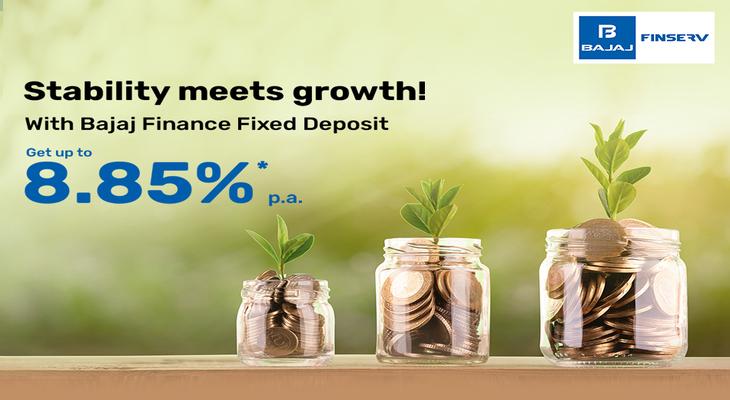looking for financial security and guaranteed returns, two options that stand out are Fixed Deposits (FDs) and the Public Provident Fund (PPF). Both offer a secure way to grow your savings, but choosing the right one depends entirely on your financial goals. So, how do you make that decision? A good starting point is to understand the key features of both and utilize financial calculators to strike the perfect balance.

Fixed Deposits: A Trusted Option for Risk-Averse Investors
Fixed deposits have long been a favorite for those who prefer low-risk investments. FDs provide peace of mind with their guaranteed returns and flexible tenure options. For example, Bajaj Finance Fixed Deposits have become popular due to their top-tier safety and credibility ratings. They offer competitive interest rates, with higher returns for specific tenures like 18, 22, 33, 42, and 44 months. Longer tenures allow your investment to benefit from compound interest. Additionally, Bajaj Finance FDs offer convenient features like online account management and flexible payout options, earning the trust of over 5 lakh customers.
Public Provident Fund: A Long-Term, Government-Backed Investment
On the other hand, the Public Provident Fund (PPF) is a government-backed scheme that encourages long-term savings. It’s an attractive option for individuals looking to build a reliable retirement corpus, thanks to its tax benefits and competitive interest rates. The PPF has a 15-year lock-in period, which helps instill disciplined saving habits. For those wanting an extended investment horizon, the PPF also allows the flexibility to extend the tenure.
Deciding Between PPF and Fixed Deposits
When deciding between PPF and FDs, it’s essential to align your investment goals with the features of each option. Financial tools and calculators can be incredibly useful in comparing potential growth. Here are some factors to consider:
- Interest Rates:
The interest rate is a key factor. While FD rates vary across financial institutions, Bajaj Finance offers competitive rates up to 8.85% p.a., including an additional 0.40% for senior citizens. In contrast, PPF rates are set by the government and may change periodically. A financial calculator can help you estimate the potential returns of each option based on current interest rates. - Tax Implications:
Taxes play a significant role in determining your actual returns. PPF interest is fully tax-exempt, whereas interest from FDs is taxable as per your income tax slab. PPF investments also qualify for tax deductions under Section 80C of the Income Tax Act. Using a calculator can help you see how taxes will impact your final returns, allowing you to make a more informed decision. - Liquidity:
Fixed deposits offer greater liquidity, with the option for premature withdrawal, albeit with a penalty. Bajaj Finance FDs, for instance, have minimal penalties for early withdrawals, making them a flexible choice in case of emergencies. In contrast, PPF has a strict 15-year lock-in period, making it better suited for long-term savings goals like retirement. Running different scenarios through a calculator will help you understand the impact of early withdrawals on your returns. - Risk Appetite:
Both FDs and PPF are considered safe investments. Bank FDs are insured up to Rs. 5 lakh per depositor per bank by the Deposit Insurance and Credit Guarantee Corporation (DICGC), while PPF benefits from government backing, providing an extra layer of security. You can use a financial calculator to assess your risk tolerance and choose the investment that best aligns with it. - Tenure and Financial Goals:
The length of your investment and your financial objectives are crucial in making a decision. If you’re saving for long-term goals like retirement, PPF, with its extended lock-in period, may be ideal. For short- to medium-term goals requiring greater liquidity, FDs offer more flexibility. A financial calculator can help you map out your investment journey and determine which option will better support your goals.
Whether you opt for a PPF or an FD, both instruments offer distinct advantages in terms of interest rates, tax implications, liquidity, risk, and tenure. By using a financial calculator, you can project potential returns and make an informed decision. When it comes to FDs, Bajaj Finance Fixed Deposits are a reliable option, trusted by over 5 lakh customers. They offer flexible payout options—whether you prefer monthly, quarterly, half-yearly, or annual interest payments (non-cumulative FDs) or interest at maturity (cumulative FDs). With high safety ratings (AAA/STABLE by CRISIL and AAA/Stable by ICRA), Bajaj Finance Digital FDs are considered among the best in the industry. Choose wisely between PPF and FDs to securely grow your wealth over time.
Terms and conditions apply.







